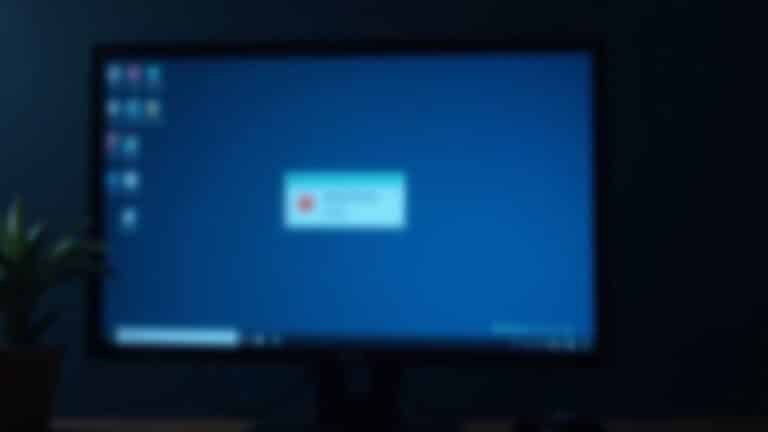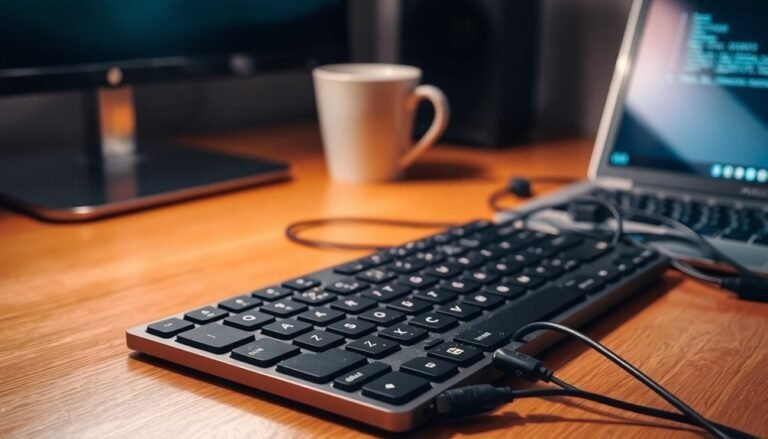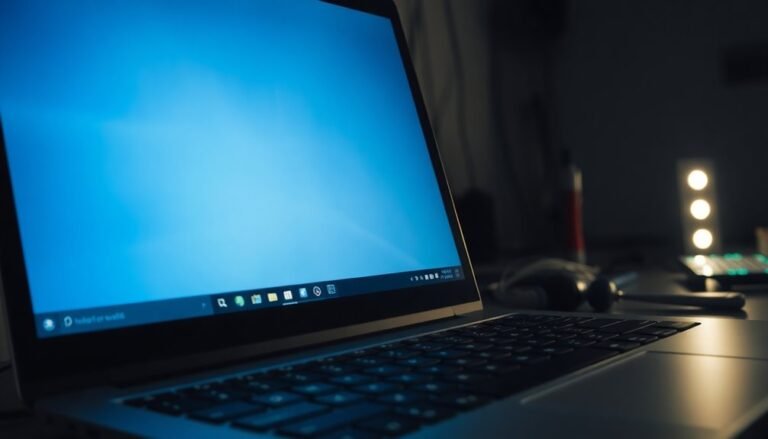Windows E Not Working: Fix File Explorer Shortcut

If Windows + E isn’t opening File Explorer, first check your keyboard for stuck keys or a disabled Windows key. Some keyboards have a “Win Lock” switch that might be enabled.
Update your keyboard drivers and verify that HID services are running. Also, review Group Policy and the registry for any restrictions.
Test the shortcut in another user account to rule out profile issues. Running system file checks can help fix corruption.
Need more steps? The guide covers deeper solutions for persistent problems.
Common Causes of WIN + E Shortcut Failure
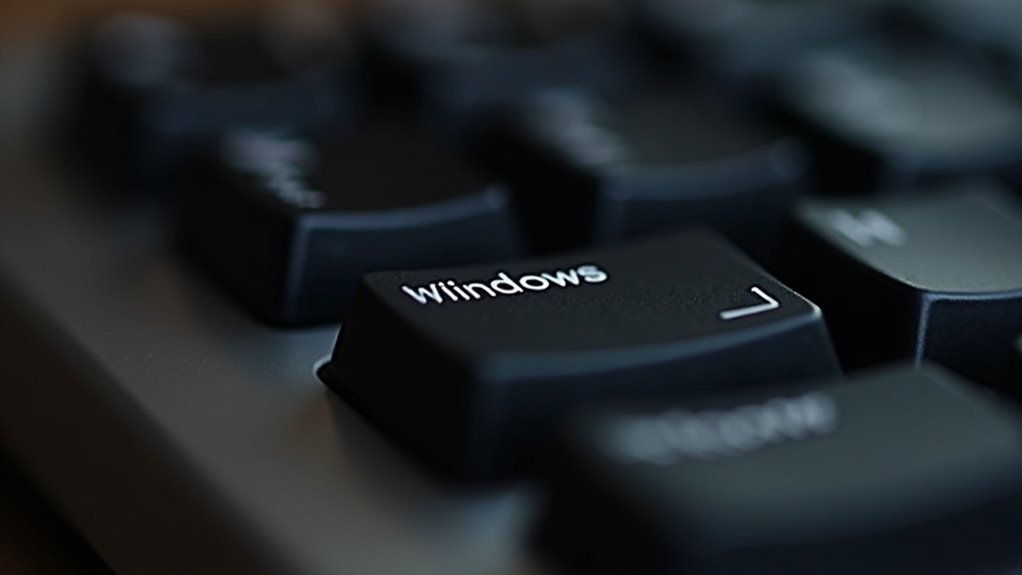
Why WIN + E Shortcut Stops Working on Windows and How to Fix It
If your WIN + E keyboard shortcut isn’t working on your Windows PC, several common causes might be responsible. Here’s a detailed guide to help you troubleshoot and fix the issue efficiently.
1. Check for Keyboard Hardware Problems
Physical keyboard issues are a frequent reason why the WIN + E shortcut fails. Inspect your keyboard for damaged or stuck keys, dirty keycaps, or faulty USB or Bluetooth connections. Some keyboards feature a “Win Lock” or gaming mode switch that disables the Windows key—ensure this is turned off. To isolate hardware faults, try connecting a different keyboard or test your current keyboard on another computer. Disruptions to important hotkeys like WIN + E can significantly impact productivity by limiting quick access to File Explorer.
2. Update or Reinstall Keyboard Drivers
Outdated, corrupted, or missing keyboard drivers can prevent Windows key shortcuts like WIN + E from working correctly. Visit the Device Manager, find your keyboard device, and update its drivers. If problems persist, uninstall and reinstall the keyboard drivers to restore proper functionality.
3. Resolve Software Conflicts
Third-party applications or utilities may block or override Windows shortcuts. Check for recently installed software that could interfere with keyboard inputs. Disabling Windows Game Mode and the Xbox Game Bar has helped many users regain WIN + E functionality, as these features sometimes hijack keyboard shortcuts.
4. Install Pending Windows Updates
Sometimes, pending or buggy Windows updates can disrupt keyboard shortcuts. Ensure your Windows operating system is fully updated by running Windows Update. Installing the latest patches can resolve bugs affecting the WIN + E shortcut.
5. Scan for Malware and Use Safe Mode
Malware or aggressive security software might block or alter the behavior of Windows key shortcuts. Running a comprehensive malware scan using trusted antivirus software is essential. Additionally, booting Windows into Safe Mode can help determine if malicious software or third-party apps are causing the problem.
Checking Group Policy and Registry Settings
How to Fix WIN + E Shortcut by Checking Group Policy and Registry Settings
If your WIN + E shortcut isn’t working, it’s essential to check your system’s Group Policy and registry settings, as these often control keyboard shortcuts and File Explorer access. Follow these steps to troubleshoot and restore the WIN + E functionality:
1. Verify Group Policy Settings
Open the Group Policy Management Console (GPMC) and ensure the relevant Group Policy Object (GPO) is linked to the correct Organizational Unit (OU) or domain. Confirm that the GPO link is enabled.
- Go to the Delegation tab and verify that “Authenticated Users” or “Domain Computers” have “Read” permission. Lack of these permissions can prevent the GPO from applying correctly.
- Group Policy Objects must be linked to the correct OU or domain for them to apply to target users and computers.
2. Refresh Group Policy on the Affected PC
Run the command prompt as an administrator and enter `gpupdate /force` to force a policy update.
- Use Event Viewer (navigate to Windows Logs > System) to identify any Group Policy errors that might be affecting your system.
- For a detailed policy report, run `gpresult /r` for a quick overview or `gpresult /h report.html` to generate a full HTML report.
3. Check and Modify Registry Settings
Open the Registry Editor (`regedit`) and navigate to the relevant Policy keys, typically under paths like:
`HKEY_CURRENT_USERSoftwareMicrosoftWindowsCurrentVersionPoliciesExplorer`
Look for restrictive values such as `NoViewOnDrive` or `NoWindowsKey`. If these are set, remove or modify them carefully.
4. Restart Your Computer and Test
After making these changes, reboot your PC to apply the updates. Test the WIN + E shortcut to see if File Explorer opens as expected.
Dealing With Third-Party File Explorer Replacements
How to Manage Third-Party File Explorer Replacements in Windows for Optimal Windows + E Shortcut Performance
While Windows File Explorer remains the default file manager, many users prefer third-party file explorer replacements like Directory Opus, Files, or Total Commander for enhanced features and customization options.
However, installing these alternatives can affect the behavior of the Windows + E shortcut, which traditionally opens File Explorer. To ensure smooth operation and maintain shortcut functionality, follow these expert tips on managing third-party file explorer replacements in Windows:
1. Configure Your Third-Party File Explorer Settings
Most third-party file managers include options to set themselves as the default file manager or directly bind the Windows + E shortcut. Access your chosen app’s settings and enable these options to reroute Windows + E to open the new file explorer seamlessly.
2. Verify System Integration and Context Menu Support****
Check if the replacement file explorer fully integrates with Windows features such as the right-click context menu and system shortcuts. Some alternatives may have limited integration, which can affect usability and shortcut consistency.
3. Understand Potential Limitations of Third-Party File Managers
Be aware that many third-party file explorers require paid licenses, have learning curves, or may not fully support all Windows file management features. Evaluating these factors helps you choose the best tool for your needs.
4. Test and Adjust Windows + E Shortcut Functionality
After configuring your third-party file explorer, test the Windows + E shortcut to confirm it launches your preferred file manager. If it doesn’t work as expected, revisit the app settings or use system shortcut mapping tools to ensure consistent behavior.
By following these steps, you can effectively manage third-party file explorer replacements on Windows and enjoy enhanced file management capabilities without losing the convenience of the Windows + E shortcut.
For more tips on optimizing Windows shortcuts and file management, explore our related guides.
Updating Keyboard Drivers and HID Services

How to Update Keyboard Drivers and Enable HID Services for Reliable Windows + E Shortcut
Ensuring your keyboard drivers and Windows HID (Human Interface Device) services are up-to-date is crucial for maintaining stable and responsive keyboard shortcuts like Windows + E. Follow these step-by-step instructions to update your keyboard drivers and configure HID services for optimal performance.
Step 1: Update Keyboard Drivers via Device Manager
- Press Windows key + X and select Device Manager from the menu.
- Expand the “Keyboards” section.
- Right-click on each “HID Keyboard Device” and choose “Update driver.”
- Select “Search automatically for drivers” to allow Windows to find and install the latest driver updates.
- If Windows doesn’t find any updates, visit your keyboard or motherboard manufacturer’s official website to manually download and install the latest drivers.
Step 2: Verify and Configure Human Interface Device Service
- Press Windows key + R, type `services.msc`, and hit Enter.
- Scroll down to find “Human Interface Device Service.”
- Right-click it, select Properties, and set the Startup type to “Automatic.”
- If the service is stopped, click the Start button to enable it.
- For advanced users, open Command Prompt as Administrator and run these commands:
- `sc config hidserv start= auto`
- `net start hidserv`
Step 3: Remove Phantom or Duplicate HID Devices
- In Device Manager, check for any duplicate or phantom HID devices under “Keyboards.”
- Right-click and uninstall any unnecessary or duplicate entries to prevent driver conflicts.
Step 4: Disconnect Unnecessary Input Devices
During the update process, unplug any non-essential input devices such as additional keyboards, mice, or game controllers. This minimizes driver conflicts and ensures smooth installation.
Repairing System Files and Windows Explorer
How to Fix Windows + E Shortcut Not Working by Repairing System Files and Windows Explorer
If your Windows + E shortcut suddenly stops working, it’s often due to corrupted system files or issues with Windows Explorer. To quickly restore this essential shortcut and ensure smooth system performance, follow this step-by-step guide to repair your Windows installation using built-in tools like DISM and SFC.
Step 1: Open Elevated Command Prompt or Windows Terminal
Right-click the Start button and select “Command Prompt (Admin)” or “Windows Terminal (Admin)” to launch with administrative privileges.
Step 2: Run DISM to Repair Windows Image
Enter the command `DISM /Online /Cleanup-Image /RestoreHealth` and press Enter. This tool scans and repairs the Windows image, fixing issues that may prevent system files from working correctly.
Step 3: Run System File Checker (SFC)
After DISM completes, type `sfc /scannow` and hit Enter. The System File Checker will scan for corrupted or missing system files and automatically repair them.
Step 4 (Optional): Check Disk Health with CHKDSK
To rule out disk errors, run `chkdsk /f /r` in Command Prompt. This checks and fixes file system errors and bad sectors on your hard drive.
Review Repair Results and Logs
After running these commands, check the scan results and detailed logs located at `%Windir%LogsCBSCBS.log` to verify successful repairs.
Pro Tip: Create a System Restore Point Before Repair
For added safety, create a system restore point before performing these repairs. This allows you to revert changes if anything goes wrong during the process.
By following these optimized steps, you can resolve Windows shortcut issues like Windows + E not working and maintain a healthy Windows Explorer experience.
Regularly repairing system files ensures your PC runs smoothly and efficiently.
Isolating User Profile and Software Conflicts
How to Fix Windows + E Shortcut Not Working: Isolate User Profile and Software Conflicts
If your Windows + E shortcut isn’t opening File Explorer, the issue might be with your user profile or system settings. To troubleshoot, start by logging in with a different user account on the same PC. If the shortcut works under another profile, your current user profile could be corrupted. In this case, create a new user profile and test the shortcut again. A working shortcut on the new profile confirms a profile-specific problem.
Next, compare account group memberships and permissions between profiles to identify discrepancies. You can also try copying settings from the old profile to the new one to check if the problem reoccurs.
Third-party software conflicts often cause shortcut issues. Test the Windows + E shortcut in a clean user profile without any additional apps installed. Faulty logon scripts or Group Policy Objects (GPOs) associated with your profile can interfere with File Explorer shortcuts, so review these configurations carefully.
Use Sysinternals tools like Process Monitor and Autoruns to diagnose user profile problems and software conflicts effectively. To manage or safely recreate user profiles, enable the hidden Administrator account on Windows.
Remember to back up your important data before making any profile changes.
Addressing Known Windows and Beta Bugs
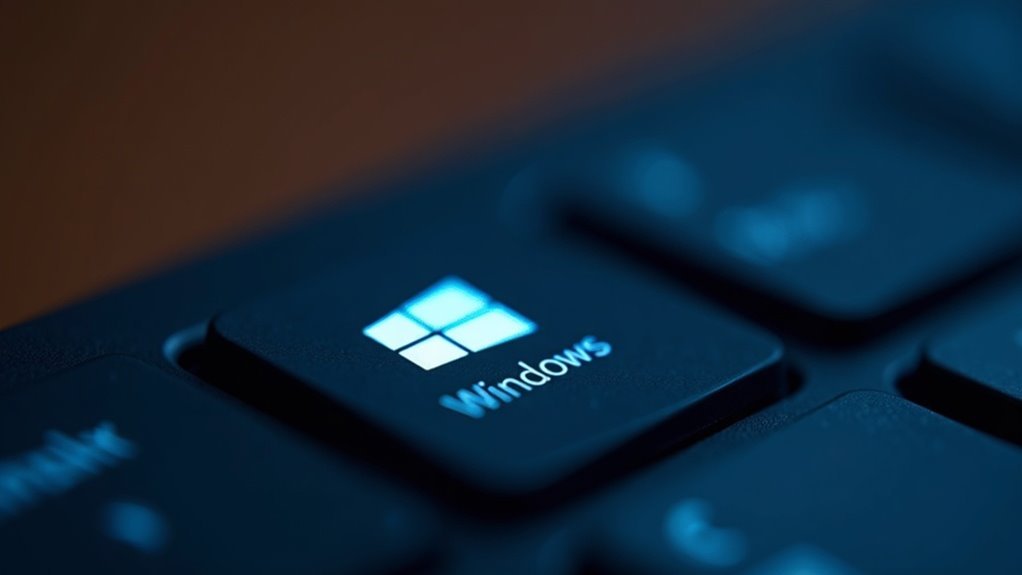
Common Windows and Beta Bugs Affecting Windows + E Shortcut and File Explorer
Microsoft frequently releases Windows updates to improve system performance, but known bugs—particularly in beta and Insider builds—can disrupt the Windows + E shortcut and alter File Explorer behavior.
Users may encounter issues such as missing program associations, File Explorer failing to launch, or unexpected changes in keyboard shortcuts after major Windows updates. While these problems are more prevalent in preview or Insider versions, stable Windows builds can also experience shortcut mapping resets or corruption following updates.
How to Identify and Fix Windows + E Shortcut and File Explorer Bugs
- Check Microsoft’s Known Issues: Visit the official Microsoft update history page and Insider forums to find current bug reports related to Windows + E shortcut problems or File Explorer issues.
- Test Windows Shortcuts After Updates: After installing updates, verify critical shortcuts like Win+E and Ctrl+A to detect any malfunctions or changes in shortcut behavior.
- Apply Temporary Workarounds: If the Windows + E shortcut stops working, use alternative shortcuts such as Ctrl+E for selecting all until Microsoft releases a fix.
- Keep Windows Updated: Regularly install the latest Windows patches and cumulative updates, as Microsoft often addresses shortcut and File Explorer bugs in subsequent releases.
Additional Troubleshooting Steps to Restore Functionality
Troubleshooting Windows + E Shortcut and File Explorer Issues: Step-by-Step Guide
If the Windows + E shortcut or File Explorer isn’t working properly after recent updates or known bugs, follow these effective troubleshooting steps to restore functionality quickly.
1. Restart File Explorer via Task Manager
Press Ctrl + Shift + Esc to open Task Manager. Locate “Windows Explorer” under the Processes tab, select it, and click “Restart.” This simple step resolves many temporary glitches.
2. Reset File Explorer Using Command Prompt
For persistent problems, open Command Prompt as an administrator. Run the command `taskkill /f /im explorer.exe` to terminate Explorer.exe, then type `start explorer.exe` to restart it fully. This resets the File Explorer process for improved performance.
3. Clear File Explorer Cache and History
Corrupted cache data can cause File Explorer to freeze or slow down. Open Control Panel, navigate to File Explorer Options, and under the Privacy section, click “Clear” to remove cached files and history. This refreshes File Explorer’s data and improves responsiveness.
4. Check Windows Event Logs and Services
Open services.msc to verify essential Windows services related to File Explorer are running smoothly. Restart any stopped services to fix underlying issues affecting File Explorer functionality.
5. Reset Display and Folder View Settings
Visual glitches can be fixed by restoring display and folder view settings to default. This eliminates customization conflicts that may interfere with File Explorer’s normal operation.
6. Run System Maintenance Troubleshooter
Access the System Maintenance troubleshooter via Control Panel for advanced diagnostics and automatic repairs that enhance system stability.
After completing these troubleshooting steps, restart your PC to apply changes and ensure the Windows + E shortcut and File Explorer work seamlessly.
Frequently Asked Questions
Can I Customize the WIN + E Shortcut to Open a Different Folder?
Yes, you can customize the WIN + E shortcut using tools like AutoHotkey. Install AutoHotkey, write a simple script remapping WIN + E to your chosen folder, then run the script. Remember, Windows updates may reset customizations.
Does Disabling WIN + E Improve System Security or Privacy?
Disabling WIN + E won’t turn your PC into Fort Knox, but you slightly shrink the attack surface. You reduce accidental File Explorer launches, but real security comes from patching, antivirus, and smart habits—not just shortcut tweaks.
Will Using Remote Desktop Affect the WIN + E Shortcut Functionality?
Yes, using Remote Desktop does affect the WIN + E shortcut. You’ll control where WIN + E opens File Explorer by adjusting “Apply Windows key combinations” settings—choose local, remote, or fullscreen to match your workflow and needs.
Can I Create a New Shortcut if My Keyboard Lacks a Windows Key?
Yes, you can create a new shortcut without a Windows key. Right-click your desktop, choose New > Shortcut, browse to your desired app or folder, and assign a custom Ctrl + Alt + [key] combination in properties.
Is It Possible to Log WIN + E Shortcut Usage for Auditing Purposes?
You can’t natively log WIN + E shortcut usage, but you can create a custom AutoHotkey script or use third-party tools to track it. Remember to respect privacy policies and test thoroughly to avoid system conflicts.
Conclusion
You’ve tried fixes from shortcut checks to system repairs, but if WIN + E still won’t cooperate, don’t give up just yet. Sometimes, the solution is right around the corner—whether it’s a hidden update, a quirky group policy, or a sneaky background app. Keep troubleshooting step by step, and you’ll likely stumble upon the culprit. One more tweak, one last restart… and you just might hear that satisfying chime of File Explorer opening once again.
